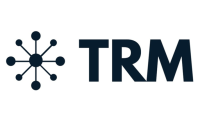Google Cloud Expands BigQuery for Blockchain
Google Cloud has announced the addition of eleven highly sought-after blockchain datasets to its BigQuery public datasets, with several improvements to existing datasets in the program. The expansion comes as a response to the growing demand from blockchain foundations, Web3 analytics firms, partners, developers, and customers who seek a comprehensive view of the crypto landscape and the ability to query multiple chains simultaneously.

Expanding BigQuery Public Datasets
Blockchain technology has witnessed significant growth and diversification in recent years, and this expansion of the BigQuery public datasets aims to facilitate in-depth analysis. Users can now access data from an impressive array of 11 new chains, including Avalanche, Arbitrum, Cronos, Ethereum (Görli), Fantom (Opera), Near, Optimism, Polkadot, Polygon Mainnet, Polygon Mumbai, and Tron.
One notable enhancement to the existing Bitcoin BigQuery dataset is the inclusion of Satoshis (sats) / Ordinals, offering developers a unique numbering scheme for sats, thereby facilitating more granular analysis of Bitcoin transactions.
Ethereum Dataset
To further cater to the diverse needs of users, Google Cloud is not only supporting community-managed datasets but also introducing first-party Google Cloud managed datasets. For instance, in addition to the existing Ethereum community dataset (crypto_ethereum), Google Cloud has introduced a Google Cloud managed Ethereum dataset (goog_blockchain_ethereum_mainnet.us), which provides a comprehensive representation of Ethereum’s data model and curated tables for events. This feature enables customers to perform richer analyses, including querying wallet balances, transactions related to specific tokens (ERC20, ERC721, ERC1155), and interactions with smart contracts.
Read More: EU’s MiCA Regulation Sparks Stablecoin Delisting Warning
The expansion of BigQuery public datasets and the introduction of Google Cloud managed datasets mark significant strides toward democratizing blockchain data. Users can now gain valuable insights into the crypto landscape without the complexities of operating nodes or maintaining an indexer. This initiative empowers researchers, analysts, and blockchain enthusiasts to explore complex questions such as tracking NFT minting across multiple chains, comparing transaction fees, and monitoring active wallets on various EVM chains.



